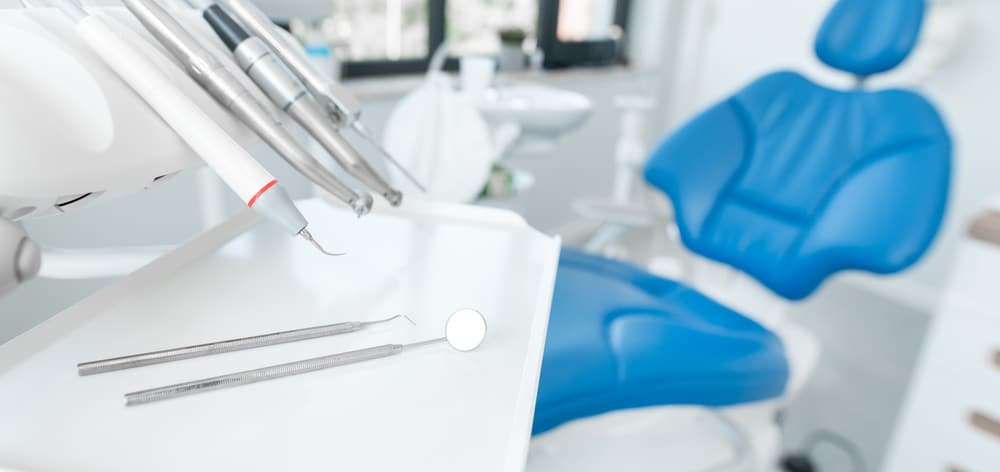Step-by-Step Dental Network Setup for New Practices
Are you looking to streamline your dental office network setup process for a new practice? Get ready to embark on a step-by-step journey towards setting up a secure and efficient network infrastructure for your dental practice. Let’s dive into the essentials of dental network setup to ensure smooth operations and data security.
Determine Your Network Requirements
The first step in setting up a network for your dental practice is to assess your specific requirements and budget. Consider the size of your practice, the number of staff members, and the types of devices and software you will be using. Your budget is also important, as this will dictate the types of equipment and services you can afford.
Before you start purchasing equipment, you need to determine the specific requirements of your network. Consider the amount of devices that will be connected to the network, the types of software that will be used, and the amount of data that will be stored. You should also consider any future growth and expansion plans for your practice. Think about the day-to-day operations of your dental office and how the network will support tasks such as scheduling; patient records management and digital imaging. Additionally, it is important to be compliant with healthcare regulations, such as HIPAA, which may influence your network security needs.
Decide on a Budget
A clear budget will help you determine which equipment and services you can afford. This will also help you prioritize your network needs and make informed decisions about purchasing equipment and services. Remember that investing in high-quality, reliable equipment can reduce the need for frequent repairs, replacements, and maintenance, thus providing long-term savings. When deciding on your budget, don’t forget to include costs for installation, ongoing support, and potential upgrades.
Choose the Right Equipment
Choosing the right equipment for your network is crucial for its success. Here are the essential pieces of a dental office network setup:
Router
A router is the most critical piece of equipment for your network. It acts as the central hub that connects all your devices to the internet and to each other. When choosing a router, consider its speed, security features, and the amount of devices it can support. Also, look for a router that can handle your practice’s bandwidth needs, especially if you are using bandwidth-intensive applications like digital X-rays or video consultations.
Switch
A switch is responsible for linking numerous devices to the network, enabling communication between them. It’s vital to select a switch with sufficient ports to handle all your devices. Further, you must decide if you need a managed switch which provides the ability to configure and monitor your network in detail, or an unmanaged switch that demands less technical understanding but provides limited control.
Firewall
A firewall is a protective security device designed to shield your network from external threats. It oversees incoming and outgoing network traffic, blocking any malicious activity. It’s important to have a robust firewall in place to protect your patient’s sensitive data. Ensure the firewall you select has the capability to update its security features regularly to guard against the latest threats and vulnerabilities.
Wireless Access Point (WAP)
A wireless access point (WAP) provides a wireless connection for devices that cannot be connected via an ethernet cable. When choosing a WAP, consider its range, speed, and security features. It’s also important to ensure that your WAP can support the number of wireless devices you plan to use and that it has advanced encryption standards to keep patient data secure.
Choose the Right Network Configuration
Choosing the right network configuration is crucial for the efficiency and security of your dental office network. Here are two common types of network configurations that are suitable for dental practices:
Peer-to-Peer Network
A peer-to-peer network is the most basic type of network configuration. In this setup, all devices on the network are connected to each other and can communicate directly with one another. This type of network is suitable for small dental practices with only a few devices. However, as your practice grows, this configuration may become less efficient due to the increased network traffic and potential for bottlenecks.
Client-Server Network
This is a more advanced network configuration involving a central server connecting all network devices. This type of network is more suitable for larger dental practices with multiple devices and staff members. It allows for better organization and management of data and resources. Additionally, it provides more robust security measures and easier backup solutions, making it a good choice for practices that handle large amounts of sensitive data.
Set Up Your Network
Once you have all the necessary equipment and have chosen the right network configuration, it’s time to set up your network. Here’s a step-by-step guide to help you through the process:
Plan Your Network Layout
Before you start connecting devices and configuring settings, it’s essential to have a clear plan for your network layout. This will help you map out the connections between devices and ensure that everything is organized and efficient. Consider the physical layout of your dental office, including where each workstation will be located, and plan your network accordingly to minimize cable clutter and ensure optimal signal strength.
Connect the Router and Switch
Start by connecting the router and switch using an ethernet cable. This allows the devices to connect to the internet and communicate with each other. Make sure the router is placed in a secure, central location to provide the best coverage for all devices. Also, ensure that the switch is easily accessible for maintenance and that new devices are added as needed.
Connect Other Devices
Now, connect all other devices to the switch using ethernet cables. Make sure to label each cable to keep things organized. Connecting devices directly to the switch with ethernet cables can provide faster and more reliable connections than wireless connections, which is especially important for bandwidth-heavy tasks like digital imaging.
Configure Network Settings
Next, you’ll need to configure the network settings on your router and switch. You’ll need to set up each device’s IP address, subnet mask, and default gateway. This enables devices to interact with each other and connect to the internet. Additionally, configure your DHCP settings to automatically assign IP addresses to devices, making network management easier.
Set Up Wireless Access
If you’re using a WAP, you’ll need to set up the wireless network name and password. Choose a solid password to ensure the security of your network. Place the WAP in a location that minimizes obstructions and maximizes coverage throughout your practice.
Configure Firewall Settings
Lastly, you’ll need to configure your firewall to ensure the security of your network. This may involve setting up access controls, intrusion detection, and content filtering. Regularly update the firewall’s firmware and review its configuration to protect against evolving cyber threats.
Get IT Support for Your Dental Office Network
Setting up a network for your dental practice is a complex process that requires expertise and technical knowledge. As a dentist, your focus should be on providing the best possible care for your patients, not troubleshooting network issues. That’s why getting IT support for your dental office network is essential.
IT support services can help you with the initial setup of your network and provide ongoing maintenance and support.
They can assist you with data protection and disaster recovery to guarantee the security of your patient’s confidential details.
With the right IT support, you can have peace of mind knowing that your network is in good hands and can focus on your core responsibilities as a healthcare provider.
Setting up a network for your new dental practice is essential in modernizing your practice and improving efficiency. With the right equipment, configuration, and support, you can ensure a smooth and secure network that allows for seamless communication and data storage. Follow these steps and get the IT support you need to confidently set up your dental office network.
Looking for dental IT network support? Contact Priority Networks today!




